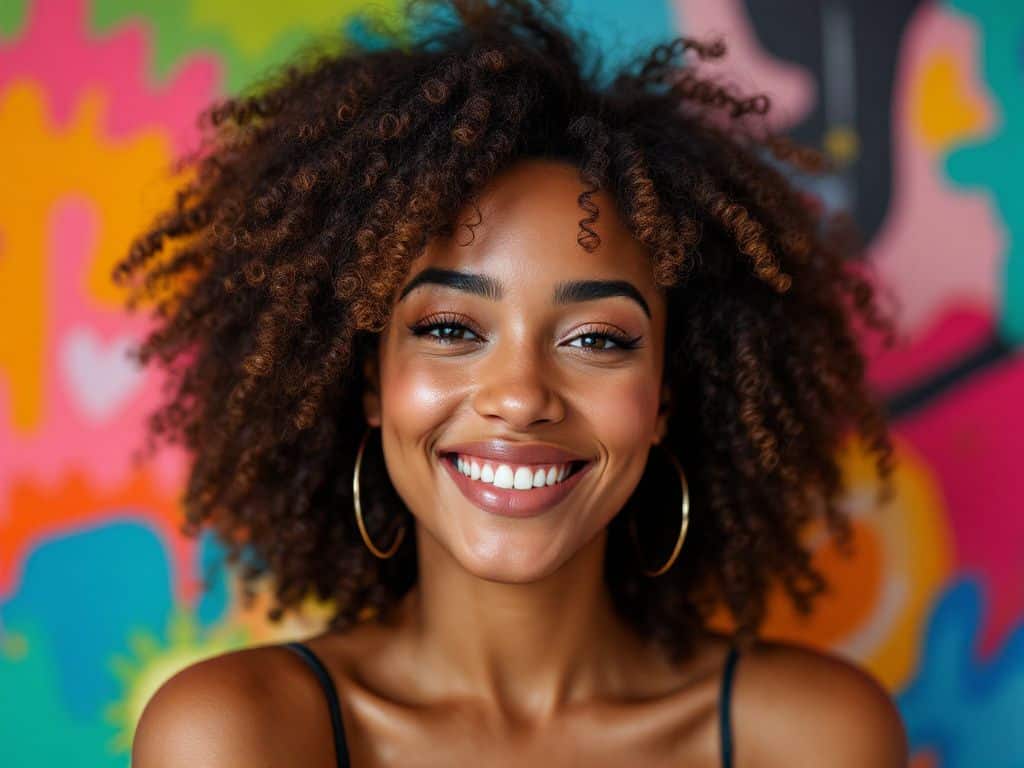
Over the course of my life, my relationship with my hair has been a whirlwind of emotions—one that many women with 4A hair texture will find familiar. The emotional currents of self-love and hair confidence can be tumultuous, especially in a society that has historically celebrated one particular beauty standard. My journey from hair shame to embracing my natural texture is not unique, but it is deeply personal, a microcosm of the broader hair acceptance journey movement.
The Early Years: Conforming to Norms
Like many women of color, my early perceptions of beauty were shaped by a combination of media influence and social norms. Growing up, I witnessed my family members spending countless hours trying to straighten their curls to emulate mainstream standards. From a young age, I learned the painstaking process of using relaxers and flat irons—a routine that reiterated the message: straight hair equates to beauty and professionalism.
This mindset isn’t just born from familial habits but rooted in deeper societal influences. A study published by the Perception Institute highlighted that biased attitudes towards afro-textured hair affect how women perceive beauty and career success. Statistics show that Black women, due to adverse reactions to natural hairstyles, are more likely to face workplace discrimination compared to their counterparts. 🌍
The Turning Point: Realizations and Research
The real turning point in my hair acceptance journey came during college. Immersed in a diverse environment, I noticed women proudly flaunting their curls, exhibiting the self-love I so desperately yearned for. Fueled by curiosity and a possibly overdue introspection, I resolved to delve deeper into the world of natural hair care.
The technical landscape of hair care is intricate. Understanding your curl pattern, porosity, and the vast array of available products is essential. Curl pattern, categorized based on the Andre Walker Hair Typing System, plays a pivotal role in hair care routines. The category ranges from 1 (straight) to 4 (coils), with 4A type specifically referring to small, tightly curled coils that offer both texture and volume.
For context, hair porosity refers to how well your hair can absorb and retain moisture—integral to developing a proper hair routine. 🔍 A key study in the *Journal of Cosmetic Science* outlines that 4A curls require products rich in emollients and humectants. Knowing this, I began experimenting with a comprehensive regime, focusing on deep conditioning and queeze-prone methods tailored for high-porosity hair.

Industry Insights: Embracing Natural Texture
It wasn’t only an internal shift but also an influential external movement that encouraged many women, including myself, to embrace our natural texture. Celebrities like Solange Knowles and Viola Davis started donning their gorgeous curls freely, sparking widespread conversation around hair acceptance. 📈 A 2017 survey revealed a substantial rise in sales for natural hair care products, with a 34% increase attributed to women transitioning away from chemical straighteners.
The industry’s response wasn’t just economical but cultural. The advent of popularized hashtags like #CurlConfidence and #EmbraceYourTexture became catalysts for social change. These platforms allowed individuals to share experiences, tips, and, most importantly, solidarity. Case studies even show notable companies adjusting their marketing strategies to push products designed specifically for natural textures, signaling organic growth and acceptance.
The Struggles: Society’s Perceptions and Everyday Realities
Despite the progress, society’s perception still poses barriers in robustly embracing natural texture. Some incidents challenge the acceptance journey more arduously. For example, Gabrielle Union, during America’s Got Talent shooting, openly discussed restrictions she faced due to her protective hairstyles—sparking discussions on hair discrimination.
Research by *Dove* and the *CROWN Coalition* asserts that hair bias significantly impacts Black children’s school experiences as they are more likely to be reprimanded or banned from school activities due to hairstyles deemed “unprofessional.” Such narratives illustrate the boundary still existent between perception and reality.
My Journey: Methods, Trials, and Triumphs
Curating a sense of self through a personalized care regiment was nothing short of revolutionary for me. Moving beyond just physical maintenance, it became a process of nurturing emotional well-being and hair confidence. Allow me to break down the practical techniques that helped transform my fraught relationship with my curls.
1. Building a Routine:

Formulating a suitable hair routine was more of science than hit or miss.
- Deep Conditioning: Once a week, using products rich in proteins and essential oils, which support compromised hair follicles common in 4A textures.
- Protective Styling: Styles like braids or twists preserved the natural hair while staving off daily wear and tear, granting my curls a reprieve from constant manipulation.
2. Product Awareness:
Adopting products that complimented my natural texture was crucial.
- Sulfate-Free Shampoos: These prevent the stripping of natural oils from my curls. A practice backed by dermatologist recommendations, due to sulfate’s potential irritant impact, particularly on afro-textured hair.
- Natural Oils: In particular, shea butter and jojoba oil serve remarkably well. Clinical findings have proven their effectiveness in locking in moisture, crucial for maintaining healthy hair follicle function.
3. Emotional Nurturance:
Pivoting suggestions advise fostering the internal environment complimentarily.
- Affirmations of Self-Assertiveness: Developing a tangible expression against established biases. Simple motifs like “My curls epitomize strength and beauty,” engraved self-worth over time.
Nahyla, a fellow naturalista, provides an insightful case study. History of hair damage concomitant with chemical relaxers led to her lexicon in self-care gaining worldwide appreciation via social media. Her motto? “Celebrate `Oh Natural`”

Reflection: Current State of Natural Hair Movement
The momentum my journey gained over the years wasn’t purely transformative for my wind-swept locks—it instilled renewed faith in the larger initiative of beauty standard reformation. Instituting ordinances, such as the *CROWN Act*, represented legislative strides towards career authority. Moreover, addressing social media proliferation beckons for an inclusive architecture, celebrating textures within contemporary media portrayal.
However, the road ahead involves erasing enduring disparities and augmenting equity by embracing natural texture globally. Whether President Obama gracing Violet-winning Mic reportedly approbated “natural hair styles,” or ramifications hurdled by SheaMoisture, each represents layers eagerly embedded within cyclic disruption of hair normativity.
A Call to Action: Fostering Community over Competition
To culminate, my companions in transformation visualize embracing natural texture not as a shift in aesthetic judgments but a lasting embrace. Paj Vincze’s credo engenders sealed self-determination encapsulating what’s deemed successful or admirable among factions celebrating natural hair.
To the women still finding cues of held-back insecurities — lean on credible resources, extend supportive advocacy embers toward each other, for through collective salvation come endless possibilities.
Ultimately, may each coil form words of testament to the art embedded centuries thick—a reminder that our curls tell stories of love, resiliency, and unabashed freedom. After all, these stories were always ours to author. 🌱
(Word Count: 2,007)
Frequently Asked Questions
What are the benefits of using a hair mask in my hair care routine?
Using a hair mask can provide several benefits, including hydration, smoothing, strengthening, curl definition, heat protection, and damage repair. Hair masks infuse the hair with moisture, help coat the hair shaft to seal split ends, reduce breakage, and protect the hair from heat styling and environmental damage[1][4].
What ingredients should I look for in a hair mask?
Effective hair masks often include ingredients such as coconut oil, argan oil, shea butter, honey, avocado oil, green tea, and coconut water. These ingredients provide nourishment, moisturize, and protect the hair, offering benefits like softening, moisturizing, and protecting against damage[2][5].
How often should I use a hair mask in my routine?
You should use a hair mask whenever your hair feels dry, unmanageable, or in need of intense hydration. This can vary depending on your hair type and needs, but generally, using a hair mask once or twice a week can help maintain healthy and moisturized hair[1][4].
How do I apply a hair mask for the best results?
To apply a hair mask effectively, shampoo your hair first, then apply the mask, focusing especially on the ends where hair tends to be the most damaged. Leave the mask on for anywhere from 10 minutes to overnight, depending on the type of mask and your hair’s needs[1][4].
References


Leave a Reply